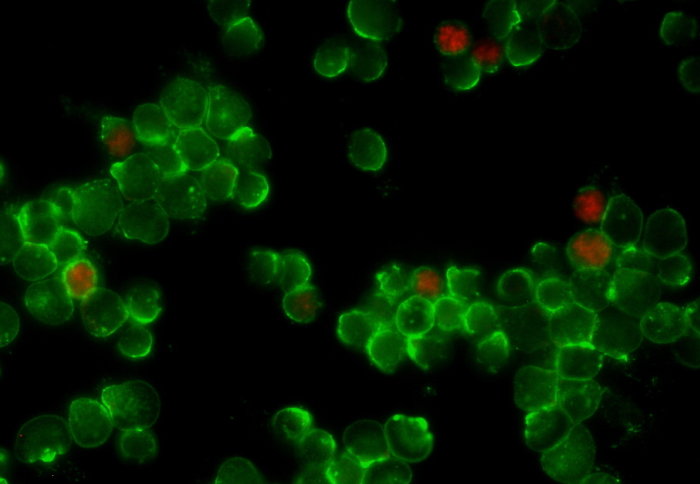Indigophoton
Senior Member (Voting Rights)

T cells (green) and regulatory
T cells (red)

When the immune system overreacts, as in an allergic reaction, cells causing trouble can change into cells that dampen the reaction.
Learning to control the mechanism behind the switch could be used to make more effective immunotherapies, say the authors of the new study, led by Imperial College London.
Within our immune system, T cells activate other immune cells to create a response, such as directing the immune system to destroy invading bacteria.
T cells are naturally equipped with the ability to control themselves.Dr Masahiro Ono
Sometimes these T cells can produce an overreaction by responding to something that isn’t a threat. This is the case in allergic reactions and autoimmune diseases such as type I diabetes and multiple sclerosis.
Special kinds of T cells, called regulatory T cells (or Tregs) have the job of curbing the activity of these overreacting T cells. The Tregs are the good ‘police’ of the immune system, controlling the bad ‘gangs’ of overreacting T cells.
It was thought that Tregs always started out as Tregs, but new research shows that overactive T cells can become Tregs and help suppress the overreaction. The results of the new study are published today in The EMBO Journal.
https://www.imperial.ac.uk/news/187131/immune-cells-switch-from-gang-members/
